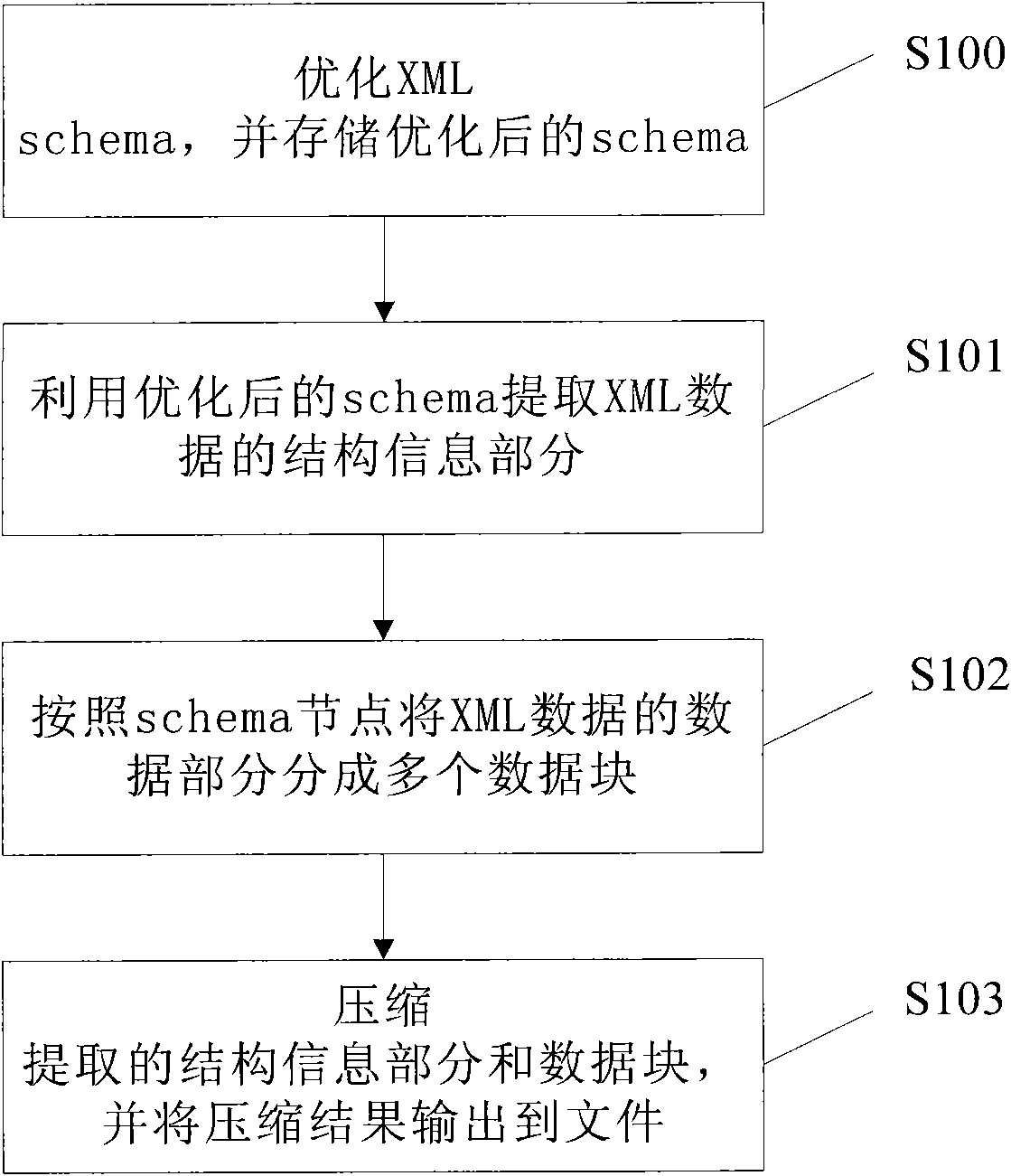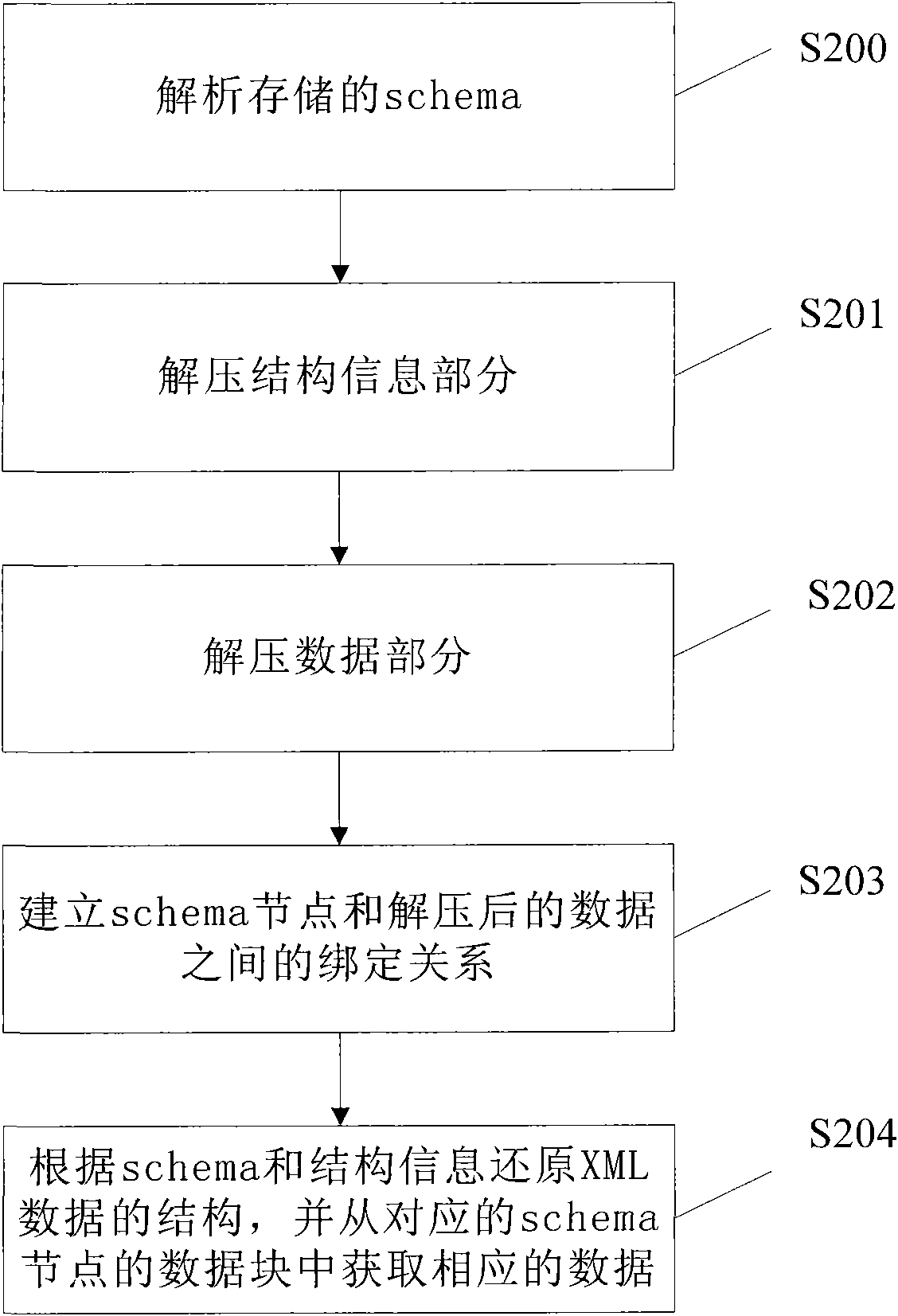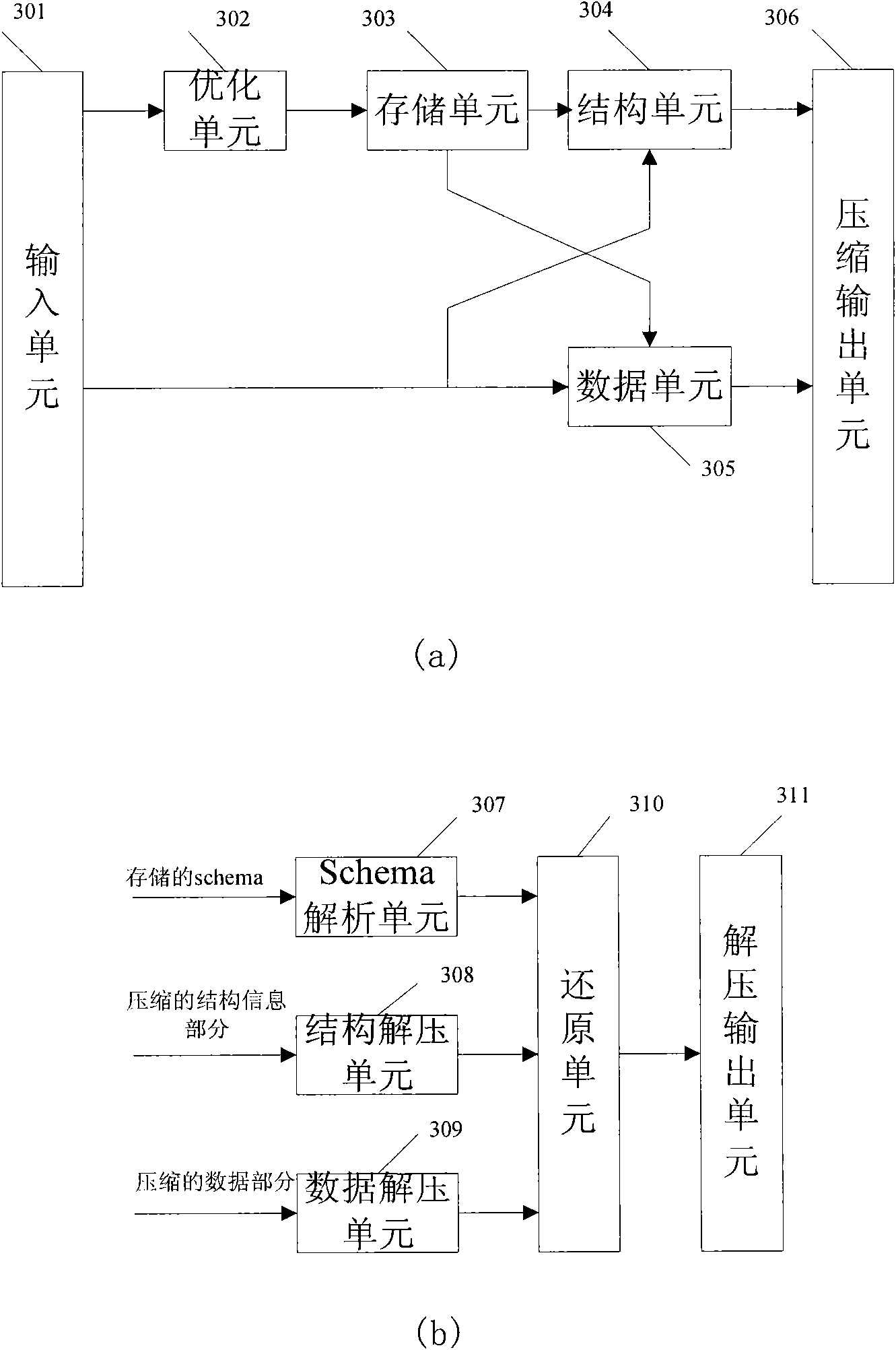Methods and systems for compressing and decompressing extensible markup language (XML) data
A data compression and data technology, applied in the direction of electrical digital data processing, special data processing applications, instruments, etc., can solve the problems of micro data blocks without considering the irregular structure of XML tree, and the compression rate is not high, so as to improve the compression rate and improve the The effect of the compression effect
- Summary
- Abstract
- Description
- Claims
- Application Information
AI Technical Summary
Problems solved by technology
Method used
Image
Examples
no. 1 example
[0023] figure 1 is a flow chart of the XML data compression method according to the first embodiment of the present invention. refer to figure 1 , the XML data compression method includes the following steps:
[0024] Step S100, optimizing the XML schema to remove redundant structural information and indirect use between nodes, and storing the optimized schema;
[0025] Step S101, using the optimized schema to extract the structural information part of the XML data standardized by the schema;
[0026] Step S102, dividing the data part of the XML data into multiple data blocks according to the optimized schema node; and
[0027] Step S103 , respectively compressing the structure information part and the data block using a common compression method, and outputting the compression result to a file.
[0028] Specifically, in step S100, the XML schema can be optimized according to the following optimization principles:
[0029] 1. For a node connected to another node by means ...
no. 2 example
[0059] Figure 4 is a flow chart of the XML data compression method according to the second embodiment of the present invention. From Figure 4 and figure 1 It can be seen from the comparison that the difference between the second embodiment and the second embodiment is that in step S402, after the data part of the XML data is divided into multiple data blocks according to the optimized schema node, the Tiny chunks smaller than a given threshold are merged. Merging optimizes the storage of micro-blocks, further increasing the compression ratio.
[0060] Figure 5 is achieved Figure 4 Block diagram of the XML data compression system for the shown method. From Figure 5 and image 3 From a comparison, it can be seen that the difference is that a merging unit 507 is added, which is used for merging miniature data blocks smaller than a given threshold, and sending the merged miniature data blocks to the compression output unit 506 .
[0061] The decompression method and ...
no. 1 example
[0075] In the first instance, the XML schema is defined as follows:
[0076]
[0077]
[0078]
[0079]
[0080]
[0081]
[0082]
[0083]
[0084]
[0085]
[0086]
[0087]
[0088]
[0089]
[0090] In this schema, there is a sequence indicator containing a choice indicator and a sequence indicator without child nodes. In the choice indicator, its three child nodes e1, e2 and e3 are all optional nodes.
[0091] An example of XML data standardized by the above schema is as follows:
[0092]
[0093]
[0094] Mike
[0095] 2
[0096] Adam
[0097] 3
[0098]
[0099] For this XML data, the compression process of the present invention is as follows:
[0100] Step 1. Optimize the XML schema and store the optimized schema.
[0101] Figure 6 a is the original schema structure, Figure 6 b is the optimized schema structure. From Figure 6 a...
PUM
 Login to View More
Login to View More Abstract
Description
Claims
Application Information
 Login to View More
Login to View More - R&D
- Intellectual Property
- Life Sciences
- Materials
- Tech Scout
- Unparalleled Data Quality
- Higher Quality Content
- 60% Fewer Hallucinations
Browse by: Latest US Patents, China's latest patents, Technical Efficacy Thesaurus, Application Domain, Technology Topic, Popular Technical Reports.
© 2025 PatSnap. All rights reserved.Legal|Privacy policy|Modern Slavery Act Transparency Statement|Sitemap|About US| Contact US: help@patsnap.com



